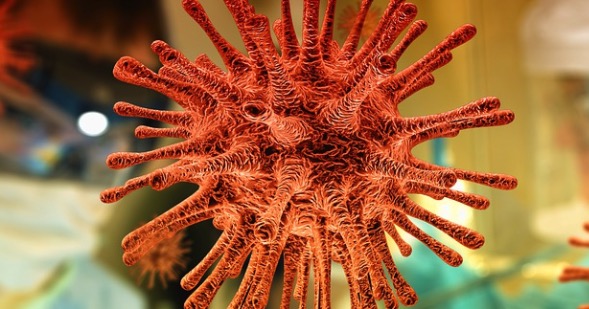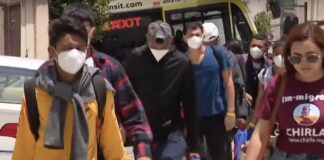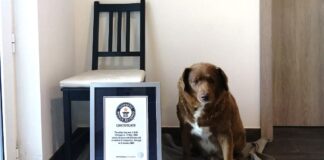OPINION | This article contains opinion. This site is licensed to publish this content.
The “lab leak theory” concerning the origin of the COVID-19 has been the subject of numerous fact-checks.
Despite widespread efforts to silence scientists on this topic, there is still strong support for the lab leak theory for 10 major reasons, according to Fox News.
After two years and significant research efforts, the origin of COVID-19 has not been determined. Although earlier forms of coronavirus have a natural origin in animals, the genetic fingerprint of COVID-19, also called SARS-CoV-2, is very unique. Here are the 10 reasons listed below via Fox News:
1) No animals have been found to be infected with SARS-CoV-2
Under the natural origin theory, COVID-19 would have originated in an animal and traveled to humans. However, researchers cannot find any animals that have tested positive for COVID-19.
If you think researchers simply aren’t looking hard enough, think again. Investigators tested more than 80,000 animals in China, including hundreds linked to the Huanan seafood market associated with the early cases of COVID-19.
There is “no positive result was identified for SARS-CoV-2,” the World Health Organization (WHO) study on the origins of COVID-19 says.
Historically, there is a strong precedent when viruses are transferred from animals to humans. Researchers traced the first Severe Acute Respiratory Syndrome (SARS) outbreak in 2003 back to bat caves in China’s Yunnan province, for example. The likely intermediary host animals were masked palm civets that tested positive for the virus.
2) No evidence of pre-epidemic infections
Looking again at historical evidence, such as the past coronavirus epidemics of SARS in 2003 and MERS in 2013, there was evidence of extensive human infection from animals prior to the virus mutating to become transmissible between humans and sparking the pandemic.
Investigators tested more than 9,000 human biological samples of blood, plasma, and throat swabs that were stored at hospitals and blood banks prior to the pandemic, but there were no positive tests for COVID-19. Researchers expected that between 100 and 400 would be positive for COVID-19 based on the natural outbreak experiences with SARS and MERS.
3) The genetic fingerprint of the virus is so unique it has never been observed in a natural coronavirus
COVID-19 has a unique code in its genes called a CGG-CGG dimer. This combination has never been found naturally and therefore points to a lab-manipulated virus. Laboratories have been experimenting in gain-of-function research experiments since 1992, which have resulted in supercharged, more infectious viruses.
4) The virus appeared in humans already “optimized” into an extremely contagious version
When viruses are naturally occurring, such as SARS1 and MERS, the historical data shows the virus becomes more capable of human-to-human transmission and more contagious as it evolves and spreads through the population. With COVID-19, however, the early optimization is “unprecedented,” according to scientists quoted in The Wall Street Journal.
COVID-19’s interaction with human cells was already 99.5% optimized. “Science knows of only one way that could be achieved: simulated natural evolution, growing the virus on human cells until the optimum is achieved,” the Journal added.
5) The Wuhan Institute of Virology studies bat coronaviruses and has engaged in “gain-of-function” research
The Wuhan Institute of Virology in China studies bat coronaviruses and their potential to infect humans. It has also engaged with so-called “gain of function” experiments, according to the State Department, so it was natural to consider whether a bat-related coronavirus outbreak in Wuhan came from the lab.
“Every informed person, every person in the field of virology, every person in the field of biosafety and biosecurity in January was thinking lab release,” Richard Ebright, a professor of chemistry and chemical biology at Rutgers University, told Fox News Digital.
The Wuhan Institute of Virology is one of at most three places in the world that was conducting gain-of-function research and potential pandemic pathogen enhancement research on SARS-related coronaviruses prior to the pandemic, Ebright said. The other two are the University of North Carolina Chapel Hill and University of Texas Medical Branch in Galveston, he said.
6) China has not cooperated and investigators have not had full access to the lab, data
China has insisted the virus did not come from the lab. And Shi Zhengli, who leads the Wuhan Institute of Virology research team on bat coronaviruses, has said the genetic sequence of the new coronavirus does not match any of the viruses her team had sampled from bat caves in China.
But China has stonewalled an independent investigation, failing to provide complete access or independence to investigators, withholding data on the earliest days of the outbreak. The WIV “has not been transparent” about its record of studying viruses most similar to the COVID-19 virus, including “RaTG13,” which it sampled from a cave in Yunnan Province in 2013 after several miners died of SARS-like illness, according to the State Department.
The bat virus databases managed by the Wuhan Institute of Virology have went offline, hidden from scrutiny.
7) Lab leaks are not uncommon, so they should not have been dismissed so quickly at the onset of the pandemic
Researchers working on viruses in laboratories have accidentally gotten infected before and caused virus outbreaks in China and elsewhere. For example, in 2004, a lab-leak SARS outbreak in Beijing infected nine people, killing the mother of an infected graduate student who worked at China’s National Institute of Virology Laboratory. The lab was conducting research on SARS coronavirus (SARS-CoV).
In Taiwan in 2003, a scientist at the National Defense University in Taipei became infected with severe acute respiratory syndrome (SARS) after studying it in the lab. And a laboratory accident was also to blame for a SARS infection in Singapore in 2003 when a doctoral student at the Singapore General Hospital got sick.
8) Researchers at the Wuhan Institute of Virology were sick just prior to the community outbreak
The State Department revealed in January 2021 that the “U.S. government has reason to believe that several researchers inside the WIV became sick in autumn 2019, before the first identified case of the outbreak, with symptoms consistent with both COVID-19 and common seasonal illnesses.”
“This raises questions about the credibility of WIV senior researcher Shi Zhengli’s public claim that there was ‘zero infection’ among the WIV’s staff and students of SARS-CoV-2 or SARS-related viruses,” according to the State Department report released in the final days of the Trump Administration.
9) The Wuhan Institute of Virology has conducted “secret” research projects with the Chinese military
The U.S State Department revealed on Jan. 15, 2021, that the Wuhan Institute of Virology has collaborated on “secret projects” with China’s military and warned that the country has a history of biological weapons work that Beijing has not “demonstrably eliminated.”
“The WIV has engaged in classified research, including laboratory animal experiments, on behalf of the Chinese military since at least 2017,” the State Department fact sheet states. “The United States and other donors who funded or collaborated on civilian research at the WIV have a right and obligation to determine whether any of our research funding was diverted to secret Chinese military projects at the WIV.”
10) There was an “orchestrated effort” by NIH officials and others to quickly shut down the lab-leak theory
Those who favor the lab-leak theory have been frustrated by leaders at the National Institutes of Health, including Fauci, who pushed the natural origin theory from the early days of the pandemic and repeatedly denied that the federal agency was funding gain-of-function research at the Wuhan Institute of Virology.
Newly released documents showed that Fauci, the director of the National Institute of Allergy and Infectious Diseases, was warned early on that the virus may have originated in the Wuhan lab. On January 31, 2020, Dr. Kristian Andersen, a noted virologist at the Scripps Lab, privately told Fauci that after discussion with his colleagues some of COVID-19’s features look possibly engineered and the “genome is inconsistent with expectations from evolutionary theory.”






